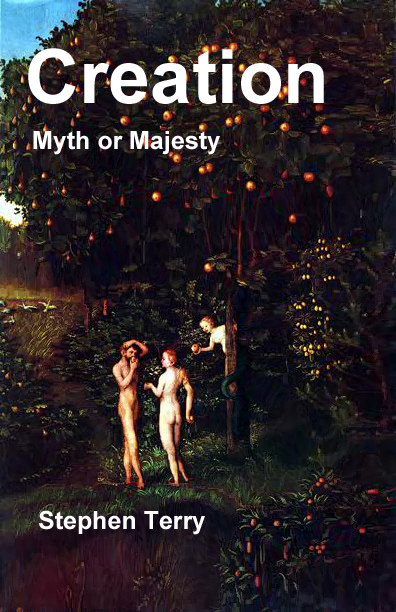
Stephen
Terry, Director

Among
the Lampstands
Commentary
for the January 12, 2019 Sabbath School Lesson
 “Write, therefore, what you have seen, what is now and what
will take place later. The mystery of the seven stars that you saw in my right
hand and of the seven golden lampstands is this: The seven stars are the angels
of the seven churches, and the seven lampstands are the seven churches.”
Revelation 1:19-20, NIV
“Write, therefore, what you have seen, what is now and what
will take place later. The mystery of the seven stars that you saw in my right
hand and of the seven golden lampstands is this: The seven stars are the angels
of the seven churches, and the seven lampstands are the seven churches.”
Revelation 1:19-20, NIV
Perhaps the day began like so many others for John on
the rocky island of Patmos. Exiled there, he may have wondered about how he was
to fulfill the great gospel commission[i] from this lonely outpost
in the Mediterranean Sea off the west coast of Asia Minor. Doubtless from his
reaction, he had little idea that he was about to personally witness the
Parousia as God suspended linear time to either bring John forward or the
Parousia backward in time to bring the two together. John describes it as a
vision, but how do you differentiate a vision from reality? Do you poke
yourself with a fork to see if you feel it? Per John’s later statements, he did
not simply see what was revealed to him, he felt it as well.[ii] What he experienced was very real. As I
mentioned last week, this experience may be what Jesus was referring to in his
enigmatic statement about John not dying before the Parousia.[iii] Some may find this difficult to understand
due to generations of inculcation that Jesus’ words were an unsolvable riddle.
But given the fact that both books are ostensibly written by the same author,
the Apostle John, it seems reasonable that there may be several links between them,
maybe including this one.
A further argument for this may be seen in John’s
mention of being in the Spirit on the Lord’s Day. Since the latter part of the
second century, Christians have identified this phrase as referring to Sunday,
the day of the Lord’s resurrection. The earliest clear reference to this,
however, is found in the non-canonical Gospel of Peter.[iv] There simply is no historical evidence that
the early church, prior to this late 2nd century reference viewed Sunday as the
Lord’s Day. However, there is no early church evidence that they did not
either. It is an argument from silence.
Modern day Sabbatarians such as the Seventh-day
Adventists, the Seventh-day Church of God, and the Seventh-day Baptists have
often identified the Lord’s Day as the Sabbath, also commonly known as
Saturday, in part due to the special blessing placed upon the Sabbath at
Creation,[v] and partly because of
Jesus’ reference to himself as Lord of the Sabbath.[vi] But once again it is an argument from silence
for we have no documentation from the early church that they referred to the
Sabbath as the Lord’s Day. The phrase here in Revelation 1:10, τη κυριακη
ημερα (pronounced tay curiakay
haymera), occurs nowhere else in canonical scripture.
Its very uniqueness argues strongly for its significance. But is it referring
to a day of worship? Is it a proof text for Sunday versus Sabbath or vice
versa? Perhaps it is the connection between the Gospel of John and the
Revelation and the enigma in John is tied to the enigma in Revelation. Possibly
the Lord’s Day John was referring to was the Parousia, that day when he would
be present to witness Jesus’ return. Some might argue that this was only a
vision and what John saw was not reality. Perhaps they do this because of the
metaphorical implications of what he experienced, but if we look at another
experience he had with Peter and James upon the mount where Christ was transfigured,
we could equally ask “Were Moses and Elijah actually there, or were they not?”[vii] If we can admit to the
reality of the former experience, perhaps we can allow the possibility of the
reality of the latter one.
This is not the only mystery that beckons from the first
chapter of Revelation. Christ is depicted as walking among the seven lampstands
with seven stars in his hand. But because we do not have the ability to see
things as heaven sees them, Jesus must explain to John what he is seeing. He
reveals that the seven lampstands represent seven congregations, and the seven
stars represent seven messengers to those congregations. At this point, you may
be saying that the text says “angels” not “messengers.” But I have merely used
the common meaning of the word that John wrote, αγγελοι
(pronounced angeloy). Perhaps you can see from the
pronunciation where our modern word “angel” came from. But our modern term has
far more baggage that comes with it than the Greek term had. Today, depending
on the religious tradition, an angel may be seen as having wings and a harp, as
well as a halo, and flying about from place to place being benevolent. If we
look at depictions of actual angels in the Old Testament, we will discover
powerful beings that were often feared and respected in their own right far
beyond the simple role of messenger implied in the Greek. However, it is
possible that the depiction here is referring to those who would carry John’s
Revelation experience to the seven congregations and may be referring simply to
human messengers. This may be even more likely when we understand that the
messages to be sent are to be written to
the messengers (dative case in the Greek) who will then relay the message to
the appropriate congregation. It is doubtful that angles suddenly appeared in
the midst of these congregations to deliver the messages in chapters two and
three. More likely, John may have addressed these messages to prominent leaders
he personally knew in those churches, and they, in turn, shared the message
with those they knew.
But what of the mystery I wrote of? The mystery consists
of the particular churches to be addressed. Why were these seven churches to
receive messages? What about the church in Rome, Jerusalem, Corinth or Antioch?
These four churches existed as well when John wrote of his experience. Likely,
others did as well. Why didn’t he write to them? Those who see the messages as
being symbolic may point to the number seven as being a spiritually significant
representation of perfection or completeness. This derives from the idea of
Creation being completed and perfect in seven days. While there may be
something to be said for that perspective, the actual meaning may be far
simpler. There are two possibilities. First, when we, as modern Christians
think of a lampstand, we often think of a single candle or lamp on top of a
single stand. In fact artists, often depict the scene in Revelation exactly
that way, with seven separate lampstands with Christ walking around in the
midst of them. But John was a Jew, and perhaps when he thought of lampstands
associated with Jesus, he thought of the Menorah, the seven-branched lampstand
in the temple. Perhaps this is what he was recording when he wrote down what he
saw, and instead of seven flames from seven lamps,
there were forty-nine lamps from seven Menoroth with Christ walking among them.
The symbolism may be indicative of the congregations of believers now being the
embodiment of the Temple at Jerusalem that had been destroyed several decades
before in 70 CE. The number seven, if taken to signify completeness may even
indicate that the various Christian congregations were the complete
representation of the Temple, obviating any need to reconstruct it. This may
not be an acceptable thought to those who strive for its reconstruction in
modern times, but it may explain why that effort has never been successful.
Another far more obvious and perhaps for that reason,
often overlooked, reason is that those seven churches were the ones closest to
Patmos, forming a cluster in southwestern Asia Minor that could all be plotted
on radii extending out from the central point of Patmos. These were also
important cities capable of serving as messengers to other parts of the empire,
thus fulfilling the roles of both lampstands and messengers. The only purpose
of a lampstand is to give light. In this case, the light would be the message
to be found in the following chapters. We have no reliable account that John
ever traveled further west than Asia Minor. Some have indicated that John
appeared before the emperor in Rome and was then exiled to Patmos. But John was
a Jew and did not have the right to appeal to the emperor that Paul had as a
Roman, so it may be more likely that John’s exile to Patmos occurred in Asia
Minor under a local authority, especially since the island is so close upon
that coast. Having lived in Ephesus for a long time caring for Mary, the mother
of Jesus, he probably had intimate knowledge of the surrounding churches and acquaintance
with those shepherding those congregations. His activities there may have made
him known to those governmental authorities as well.
John has provided us with a solid preface to the coming messages to the seven
churches. How much those messages were based on his personal knowledge and how
much was based on inspiration, he does not say. But out journey through what he
has written is sure to be an interesting one.
